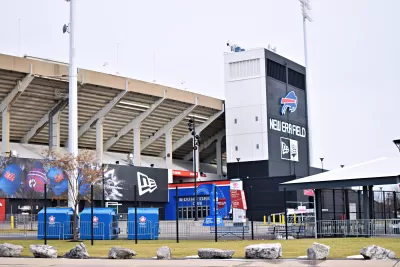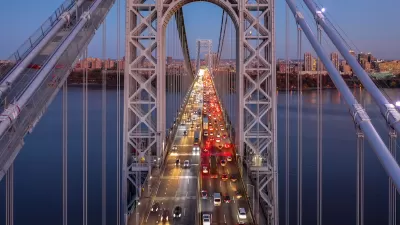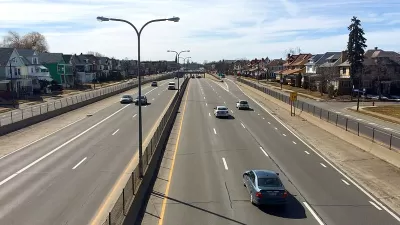The total estimated cost of the NFL stadium planned for the Buffalo Bills in Orchard Park, south of Buffalo, New York, comes to $1.4 billion—including $850 million in public funding.

Publicly funded stadiums for privately owned professional sports teams are facing increasing amounts of criticism for draining public coffers to the benefit of wealthy team owners. Three cities—Oakland, California, San Diego, California, and St. Louis, Missouri—found themselves on the losing end in 2016 after facing expensive demands from National Football League teams.
Buffalo, New York is choosing the other path by devoting major financial support to keep their beloved franchise local. A plan for a Downtown Stadium, proposed in August 2014, failed.
"After months of negotiations, the National Football League team has reached an agreement with New York State and Erie County to build an open-air stadium in Orchard Park," report Tim O'Shei and Jason Wolf for the Buffalo News. "New York is slated to contribute $600 million and Erie County $250 million toward construction."
The $850 million in taxpayer funding attached the stadium's price tag is less than anticipated, according to a soundbite from the article attributed to New York Governor Kathy Hochul.
The article also includes planning details for the new stadium, including a superlative: "The new stadium will be built directly across the street on Abbott Road, adjacent to Erie Community College’s South Campus, in what Hochul called 'the largest construction project in Western New York history.'"
More details on the stadium project can be read on the Buffalo Bills website.
FULL STORY: Buffalo Bills, New York State, Erie County reach 'ironclad' 30-year deal to build $1.4 billion stadium

Alabama: Trump Terminates Settlements for Black Communities Harmed By Raw Sewage
Trump deemed the landmark civil rights agreement “illegal DEI and environmental justice policy.”

Study: Maui’s Plan to Convert Vacation Rentals to Long-Term Housing Could Cause Nearly $1 Billion Economic Loss
The plan would reduce visitor accommodation by 25% resulting in 1,900 jobs lost.

Why Should We Subsidize Public Transportation?
Many public transit agencies face financial stress due to rising costs, declining fare revenue, and declining subsidies. Transit advocates must provide a strong business case for increasing public transit funding.

Paris Bike Boom Leads to Steep Drop in Air Pollution
The French city’s air quality has improved dramatically in the past 20 years, coinciding with a growth in cycling.

Why Housing Costs More to Build in California Than in Texas
Hard costs like labor and materials combined with ‘soft’ costs such as permitting make building in the San Francisco Bay Area almost three times as costly as in Texas cities.

San Diego County Sees a Rise in Urban Coyotes
San Diego County experiences a rise in urban coyotes, as sightings become prevalent throughout its urban neighbourhoods and surrounding areas.
Urban Design for Planners 1: Software Tools
This six-course series explores essential urban design concepts using open source software and equips planners with the tools they need to participate fully in the urban design process.
Planning for Universal Design
Learn the tools for implementing Universal Design in planning regulations.
Smith Gee Studio
Alamo Area Metropolitan Planning Organization
City of Santa Clarita
Institute for Housing and Urban Development Studies (IHS)
City of Grandview
Harvard GSD Executive Education
Toledo-Lucas County Plan Commissions
Salt Lake City
NYU Wagner Graduate School of Public Service




























